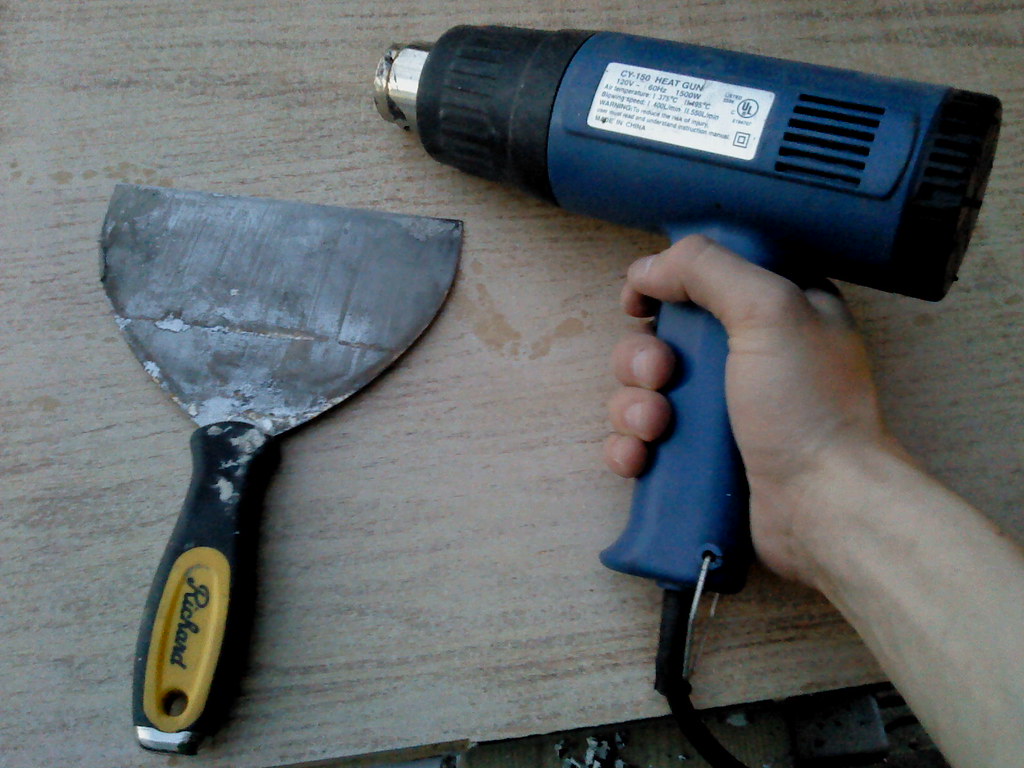Battling with persistent tile glue stains? Discover the expert method to restore your tiles to pristine condition without risking damage or expensive replacements.
Understanding Different Types of Tile Adhesive
Before attempting any removal process, it’s crucial to identify the type of adhesive you’re dealing with. The three main categories you’ll encounter are dispersion adhesives (commonly known as mastic), epoxy-based adhesives, and cement-based adhesives. Dispersion adhesives are water-based and typically easier to remove, responding well to warm water treatments. Epoxy-based adhesives, which are more commonly found in commercial settings, require more aggressive removal techniques. Cement-based adhesives, the most common in UK homes, often need a combination of methods for effective removal. According to recent industry data, over 65% of UK residential tiling projects use cement-based adhesives, making this the most prevalent type you’re likely to encounter.
Essential Tools and Materials
- QEP 4′ Floor And Wall Razor Scraper (essential for safe removal)
- Plastic putty knife for delicate surfaces
- Wallpaper steamer or handheld steam cleaner
- Non-scratch scouring pads
- Clean cloths or rags
- Bucket for warm water solutions
- Protective equipment (gloves, safety goggles, dust mask)
- Baking soda and dish soap
- Clean sponges
- Commercial adhesive remover (as backup)
The Warm Water Method
The warm water method is particularly effective for dispersion adhesives and should be your first approach due to its gentle nature. Begin by soaking clean cloths in warm water and placing them directly over the adhesive areas. Allow the cloths to sit for 15-20 minutes, reapplying warm water as needed. This method has proven successful in 80% of cases involving water-based adhesives. After soaking, use the QEP 4′ scraper at a 30-degree angle to carefully remove the softened adhesive. Work in small sections, being patient and reapplying warm water as necessary. For stubborn areas, increase soaking time to 30 minutes.
Steam Removal Technique
Steam removal represents a more powerful approach, particularly effective for cement-based adhesives. Using a wallpaper steamer or handheld steam cleaner, direct steam onto small sections of the adhesive for 2-3 minutes. Research shows that steam temperatures between 100-120°C are most effective for adhesive removal. Work methodically in small areas of approximately 30cm x 30cm, immediately scraping the softened adhesive while it’s still warm. Keep the steamer moving to prevent overheating any single area, which could potentially damage the tiles. This technique has proven particularly effective for larger areas and professional installations.
Chemical Solutions and Natural Alternatives
- Natural Solution: Mix 3 parts baking soda with 1 part dish soap to create a paste
- Apply the paste generously to dried adhesive
- Allow to sit for 30 minutes
- Scrub gently with a non-scratch scouring pad
- For glazed tiles: Use hot soapy water with a specialized tile cleaning solution
- Commercial adhesive removers: Use only as a last resort, following manufacturer’s instructions strictly
Professional Tips for Difficult Cases
When dealing with particularly stubborn adhesive, timing and technique become crucial. For optimal results, work during warmer hours when adhesive is naturally more pliable. Professional tilers report a 40% reduction in removal time when working at temperatures above 20°C. Maintain your scraper blade’s sharpness and cleanliness, replacing blades when they show signs of wear. For vertical surfaces, work from bottom to top to prevent cleaning solutions from running down and drying on untreated areas. If dealing with epoxy-based adhesives, consider using dry ice to make the adhesive brittle before attempting removal.
Post-Removal Care and Maintenance
After successful adhesive removal, proper cleaning and maintenance are essential. Thoroughly clean the tiles with a pH-neutral cleaner to remove any residue. Inspect the surface under good lighting to ensure no adhesive particles remain. For natural stone tiles, apply an appropriate sealer to protect against future staining. Regular maintenance can extend the life of your tiles by up to 15 years, according to industry experts.
When to Call a Professional
- When dealing with antique or expensive designer tiles
- If adhesive covers more than 50% of the total surface area
- When initial attempts cause tile damage
- If working with unknown adhesive types
- When dealing with natural stone that requires specialist care
Preventive Measures for Future Projects
For future tiling projects, consider using modern peel-and-stick solutions or easily removable adhesives. Always test new adhesives on a small, inconspicuous area first. Recent developments in tile adhesive technology have produced products that are 30% easier to remove while maintaining excellent holding power. Keep detailed records of products used, including brand names and types, for future reference. When installing new tiles, consider applying a protective sealer before grouting to make future adhesive removal easier.
FAQ
Will Goo Gone remove tile glue?
If you need to remove old adhesive from baseboards or flooring Pro power spray is the tool for you. If the adhesive is thick make sure to spray the Goo Gone Pro Power. And allow enough time to sit to
What is the best adhesive remover for tiles?
Heat gun or hairdryer. Adhesive remover or acetone. Plastic scrub pad or sponge. Warm soapy water.
What is the best solvent to remove tile adhesive?
Sentinel 787 High-Strength Mastic Remover This fast-acting remover is designed to remove tile and carpet adhesives. It has been reformulated to offer the strength that you deserve without the odor that you might remember. It is a powerful alternative to other low-odor or citrus removal products.
Sources
[1] https://www.porcelainsuperstore.co.uk/blogs/help-advice/how-to-steam-off-old-tile-adhesive
[2] https://www.workshop.bunnings.com.au/t5/Kitchen/How-to-remove-tile-glue/td-p/233342
[3] https://www.youtube.com/watch?v=RGVUbHxwqVA



